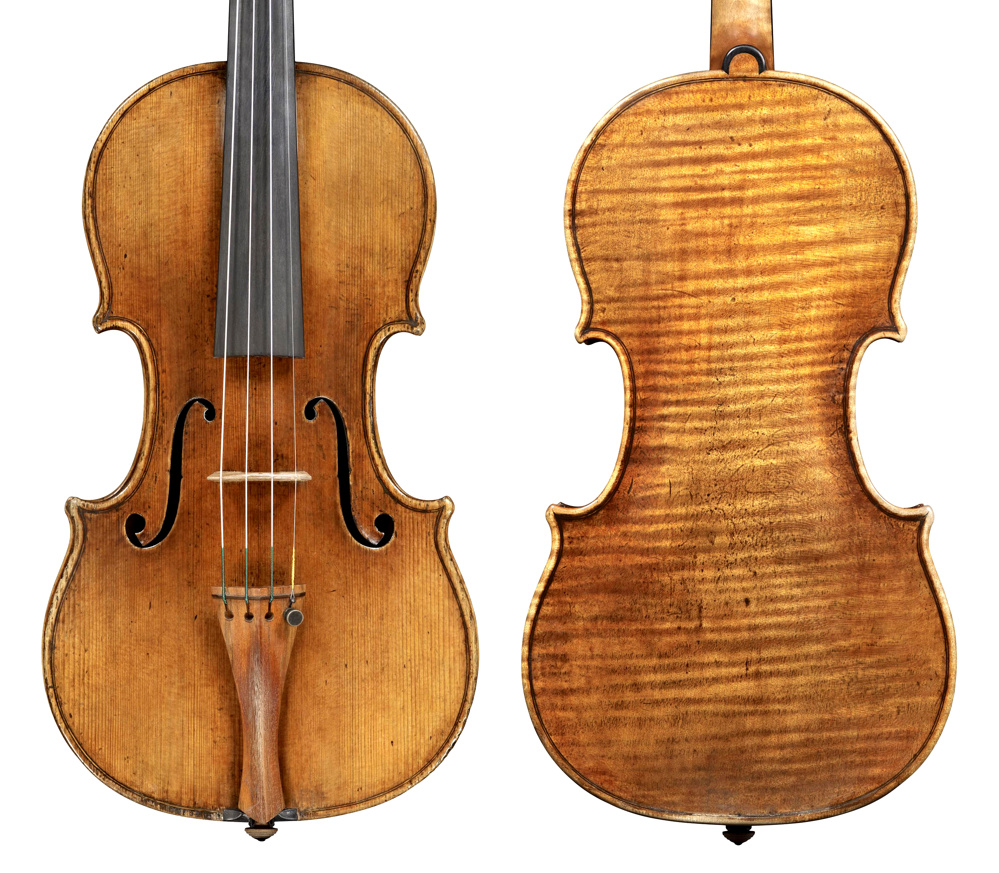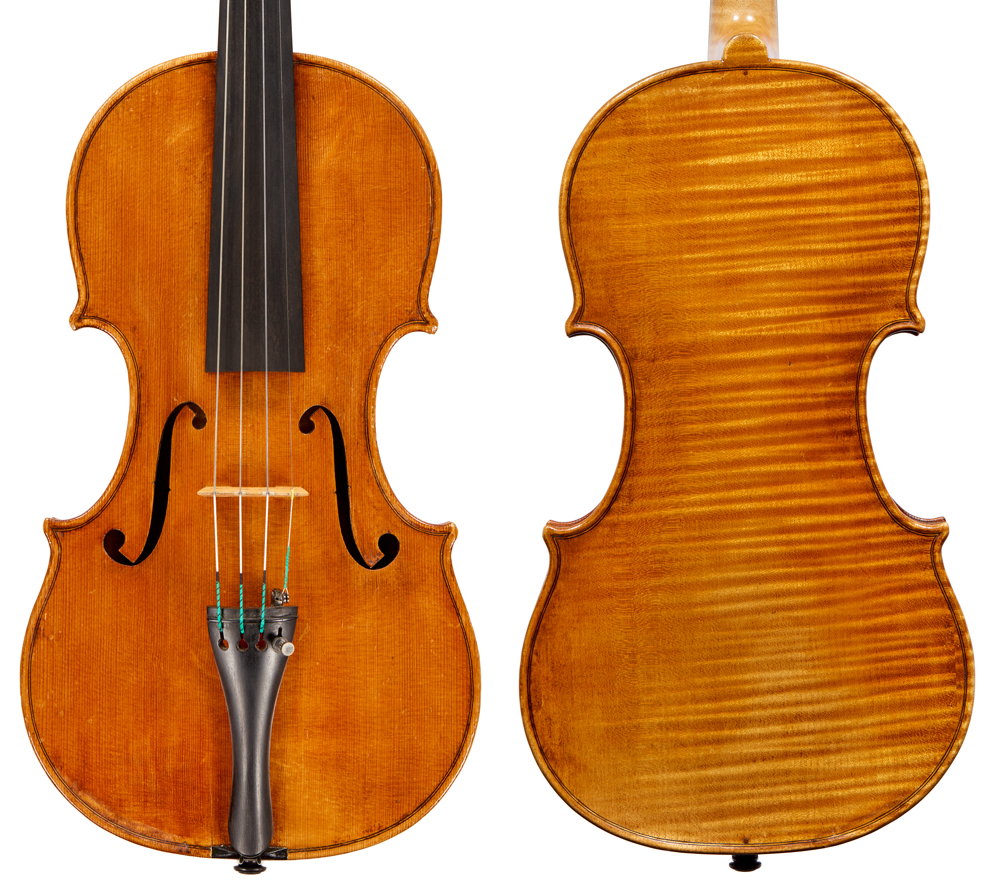In 1953 Camilla Wicks performed the Beethoven Violin Concerto at Carnegie Hall with Bruno Walter and the Philharmonic-Symphony of New York. She was an international star, one of the very first women to break through to the front rank of violin soloists, and her violin was the 1725 ‘Duke of Cambridge’ Stradivari. ‘If a Greek goddess could play the violin, it would sound like this,’ wrote a recent reviewer of the performance, which is now available on an acclaimed disc of her live concerts released by the Music & Arts label.
Yet a few years later Wicks sold the Strad and retired to raise her young family. When she resumed her solo career in the 1960s she was playing a modern violin made in 1959 by the Australian Arthur Smith, which she used for the rest of her career.

Camilla Wicks with Bruno Walter, the conductor for her famous Beethoven Concerto at Carnegie Hall in 1953
Speaking recently from her home in Florida, Wicks tells the story of how Ruggiero Ricci came to give her the Smith. They were old friends, having been fellow students of Louis Persinger at the Juilliard School, although Ricci was ten years her senior. Ricci had become acquainted with Smith, who performed some emergency repairs to his 1731 ‘Huberman’ Guarneri ‘del Gesù’. In 1963 Ricci brought a violin made by Smith as a copy of the ‘Huberman’ together with the original to a concert in Dallas, where Wicks was then living.
[Ricci] said, “I want to give you the Smith. I’ve thought about it and I want to do that for you.” I couldn’t believe it!
‘I had recently had my fifth child, and Ricci called one day and said he was in town,’ she recalls. ‘I said, “marvelous, come over and have lunch!”’ After lunch they compared violins – at that time Wicks was playing an Italian instrument that she describes as ‘not a very fine violin. It was OK for teaching.’ That night Ricci performed with the Dallas Symphony and at the reception afterwards he asked Wicks if she had noticed anything different about his violins in the first and second halves of the concert. ‘I said “no, they were both wonderful,” and I was truly bowled over by his playing.’ At that point Ricci revealed he had played the first half on his Guarneri and the second half on the Smith. ‘I didn’t know he was doing that – so sneaky! And he said, “I want to give you the Smith. I’ve thought about it and I want to do that for you.” I couldn’t believe it! I have never gotten over his generosity.’
The Smith did not have a major name value at the time, ‘but that didn’t mean anything to me because when he played it, it was beautiful. It sounded like Ricci. I just can’t tell you what a difference it made to me. It gave me back quite a bit of power in my life.’
Camilla Wicks aged six. A child prodigy, she entered Juilliard aged just ten. Photo courtesy Lise-Marie Wertanzl
Did it take a while to get back into shape? ‘Yes, I went back into a hard practising schedule but of course there was dinner to make and so on. So I didn’t play all the time and I taught a lot. But I think practice was my answer. Some of my friends said “you don’t have to practise that much” and I said “yes I do!” Some people are able to take the violin out of its case and start playing Paganini but I needed quite a bit of time to warm up and I wasn’t satisfied until I was really, really warm.’
Wicks says that some of the ‘most satisfying performances’ of her career were made on the Smith. ‘I never felt restricted by it. I’ve always had some issue that I needed to pay attention to on an instrument – maybe there’s a note on the A string that sounds funny or something like that – but this violin never let me down. It was a marvelous experience to play it.’
Before her career break Wicks had played the ‘Duke of Cambridge’ Stradivari, which was bought for her by her parents after a demanding European tour revealed the limitations of her 1698 Tononi. ‘The Tononi was a beautiful violin but it wasn’t very big and didn’t project well. When you go out on stage you have to know that what you play is getting across. So I called my father and said “I can’t play my tour on this violin, it just isn’t what I need.”’ She remembers the Strad as having ‘the sweetest, most beautiful sound’ and she played it at the height of her career in the 1940s and early 50s.

‘Duke of Cambridge’ Stradivari, 1925. Photos: Jan Roehrmann
More photos
Being a top ranking female violinist wasn’t always easy, as she recalls with some humor. ‘I was one of the few women who broke through to play in the big leagues and some of the conductors were really quite miffed about it. I won’t name names, but one of them was not following me on purpose and was a half measure behind me the whole time. I didn’t know then to pace myself to the stubborn conductor’s accompaniment. That would have been the answer, but I went ahead and played my speed!’
Then came marriage and in 1953 the first of her five children was born. ‘I was always playing with one of my children inside of me – I was pregnant with my first daughter for the Beethoven Violin Concerto at Carnegie Hall, and then I continued when I was pregnant with my son, and so on, then finally I gave up for a while.’
Was it very painful to part with the Strad? ‘No. Of course almost any woman with a significant career and babies on the way would have quite a conflict between the two, but at that time my family was most important to me.’ So would she have done anything differently with hindsight? Her reply is emphatic: ‘No, not at all. You can’t look at your beautiful children and say I would have sacrificed you for my career! Perhaps the spacing could have been better – I had five children within ten years. That was a lot of diapers!’
Now aged 89, Wicks has finally decided to pass the Smith violin on. ‘It’s hard because it was such a friend. All my life I went out with this friend of mine and we stood there on the platform and we made music. And now I would love to play Bach all day long, but I can’t so I decided, well, let’s circulate this wonderful violin. I want it to be in the hands of somebody else. It should not be sitting in the closet. It’s too beautiful!’
Camilla Wicks’s 1959 Arthur Smith violin (pictured below) was sold by Tarisio in May 2017 for a record $84,000. With thanks to Lise-Marie Wertanzl, youngest daughter of Wicks, for providing images.
Listen to Wicks perform the Beethoven Concerto at Carnegie Hall in 1953

Violin by Arthur Smith, Sydney, 1959. It is loosely based on the 1731 ‘Huberman’ Guarneri ‘del Gesù’. Photos: Tarisio
More photos



